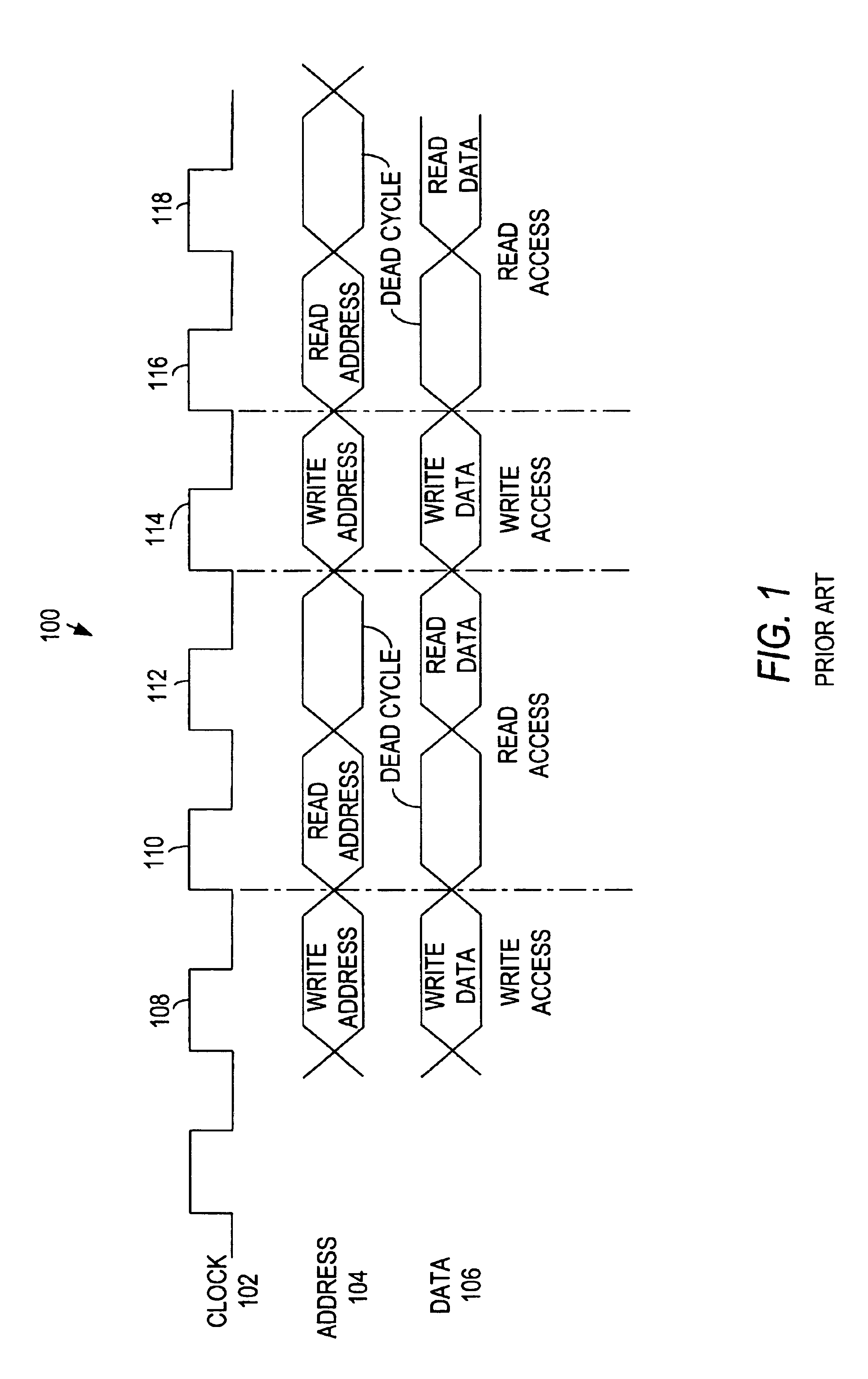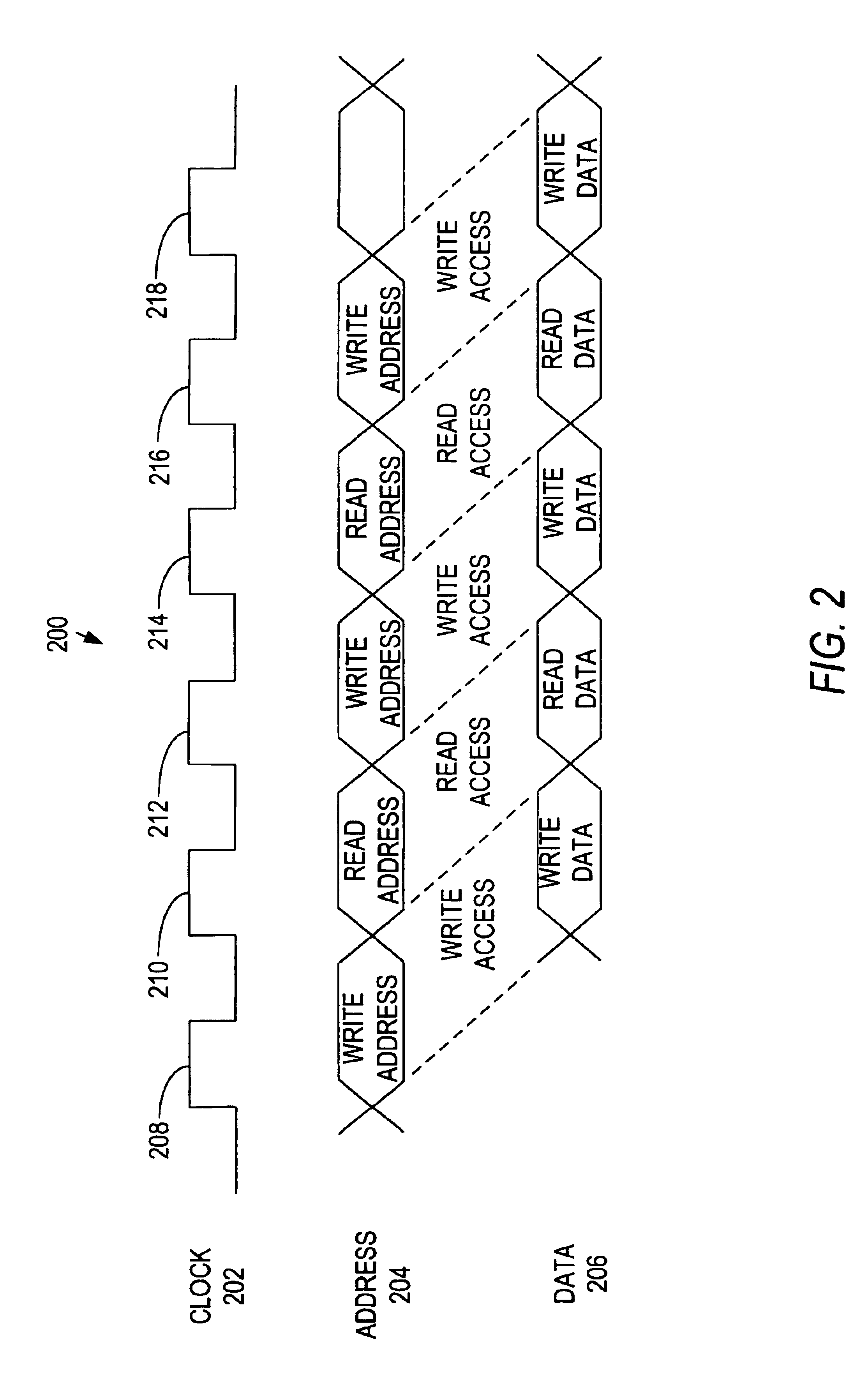Multi-bank memory accesses using posted writes
a multi-bank and memory access technology, applied in memory adressing/allocation/relocation, digital storage, instruments, etc., can solve the problem that the memory device cannot be modified to accommodate the adjusted relative timing, and achieve the effect of reducing the read-write access delay
- Summary
- Abstract
- Description
- Claims
- Application Information
AI Technical Summary
Benefits of technology
Problems solved by technology
Method used
Image
Examples
Embodiment Construction
[0016]Memory devices and computer circuits that interface with each other are typically constructed such that addresses and data for write accesses are coincident with each other. For example, with a memory device that has separate address and data busses, computer circuits are typically configured to present addresses and data for a write access during the same clock cycle, or at the same clock edge. Alternatively, data is presented at some other time convenient for the memory device (e.g., data is presented while the memory device is decoding the column address and is inserted into the memory array at a convenient point during the decoding process). Within the memory device itself, addresses and data for write accesses typically retain the same relative timing (i.e., the addresses and data for a write access are present during the same clock cycle or clock edge).
[0017]However, addresses and data for read accesses to memory devices are not coincident during the same clock cycle or ...
PUM
 Login to View More
Login to View More Abstract
Description
Claims
Application Information
 Login to View More
Login to View More - R&D
- Intellectual Property
- Life Sciences
- Materials
- Tech Scout
- Unparalleled Data Quality
- Higher Quality Content
- 60% Fewer Hallucinations
Browse by: Latest US Patents, China's latest patents, Technical Efficacy Thesaurus, Application Domain, Technology Topic, Popular Technical Reports.
© 2025 PatSnap. All rights reserved.Legal|Privacy policy|Modern Slavery Act Transparency Statement|Sitemap|About US| Contact US: help@patsnap.com



